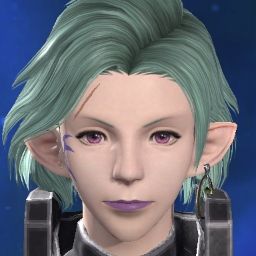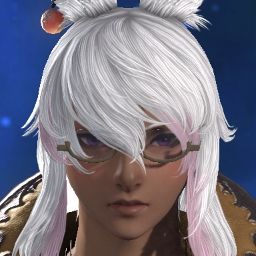I'm making a version of the AST's Deck of Sixty for roleplaying purposes, and I plan on including both the Major and Minor Arcana. And I came across a bit of a snag when it comes to their meanings and associations...
According to Encyclopaedia Eorzea, the Deck of Sixty has a similar correspondence structure as real life Rider-Waite and Marseille tarot decks with the six suits:
- Each suit has a faculty, which is the aspect of life they represent
- Each suit has a social class associated with them, often tied to the faculty they represent
- Each suit is associated with one of the six elements and thus are defined by each of the Major Arcana, who in turn represent each pair of the Twelve that represent said element
It's stated that these aspects can be employed by the reader during a session, but aren't mandatory. Which fits real life Tarot. Not every correspondence of a card has significance during a reading. But they are there and can provide further context when the meaning isn't so obvious.
And for the most part, I can explain these associations fairly decently. But what I don't understand is this:
The suit of Staves is associated with "Volition" and the Smallfolk, and its relationship with the Balance means they'd be ruled by Azeyma and Nald'thal. Nald'thal in specific being the Traders, the gods of commerce and the judges of the dead.
The suit of Rings is associated with "Possession" and Merchants. Them being represented by the Bole means they're ruled by Nophica and Althyk.
Traditionally, in real-life Tarot, the suit of Pentacles does represent Earth, Nature, Growth and thus Wealth, be it material or spiritual. And often they're depicted with a lot of commerce-related imagery, such as "Poverty", "Charity", "Entrepreneurship", "Management". So, by that alone, it makes sense to associate Merchants with the suit of Earth.
But Nald'thal, who are the gods of commerce and merchants, represent Umbral Fire. And their cards represent "Volition".
Why give the idea of Merchants and wealth over to Althyk and Nophica where their god is on another element? Possessions I understand, those two are the gods that grow and mature material things... but merchants?
Perhaps my interpretation is too narrow?
Or perhaps, the table in EE vol 1 has oddly-thought out/prototypical associations?
Given how these look similar to real-life tarot correspondence tables, maybe Square Enix tried to do a similar system but weren't really sure how to approach it?
-
02-15-2023 12:45 PM #1Player

- Join Date
- Oct 2017
- Location
- Bozja
- Posts
- 2,580
- Character
- Harun Asubra
- World
- Zodiark
- Main Class
- Warrior Lv 100
Question: Astrologian Deck and the Twelve
(4)
-
02-15-2023 12:49 PM #2Player

- Join Date
- Oct 2017
- Location
- Bozja
- Posts
- 2,580
- Character
- Harun Asubra
- World
- Zodiark
- Main Class
- Warrior Lv 100
Addendum:
I'll reiterate that these correspondences aren't mandatory. But they'll still be something to factor in when looking at a suit's meaning overall, since those aspects are where they draw ideas from. In IRL Tarot, sure, we can divorce the 2 of Pentacles from its Earth association on the spot during a reading, but it's still good to keep in mind that it draws meaning from that element. So they're not "important", sure, but they're also not something to scoff at since those ideas are what ended up structuring the suit eventually.
And as for Nald'thal, associating them to "Volition" makes sense because... well, they're the gods of the dead. Naturally, they will weigh our choices. Choices motivated by our willpower, beliefs and desires. Hence, "Volition". So... it makes sense, but they're still losing out on their most obvious association (where they even have an entire city state dedicated to!) to the nature gods Nophica and Althyk.
This is the full table in EE v1:

For reference, this is a similar table in tarot:
 (4)
(4)Last edited by Midareyukki; 02-15-2023 at 01:05 PM.
-
02-15-2023 01:06 PM #3Player

- Join Date
- Sep 2021
- Location
- Solution Eight (it's not as good)
- Posts
- 3,005
- Character
- Ein Dose
- World
- Mateus
- Main Class
- Alchemist Lv 100
If it's like the real tarot, the specific meanings of the minor arcana don't make as much sense together as you'd expect them to. Probably because, like all fortune-telling, tarot readings are designed to be vague and nebulous enough that they can take credit for predicting most anything!
The EE1 is basically the only evidence we've got that the Deck of Sixty is a thing, so we can't really give you more information than you yourself already has, that info just doesn't exist. The Deck is sort of elaborated on there, mentioned exactly once in the AST questline, and then the entire rest of the AST questline does the thing every piece of media with a tarot reading does: ignores the minor arcana because the major arcana are much more interesting and magical, as well as much easier to take seriously. (Seriously, drawing the equivalent of the 3 of Diamonds really makes it clear that the tarot deck are just playing cards, and really undercuts if media's trying to do a serious fortune telling.) Unfortunately, the deck only having six major arcana means you probably can't pull that trick yourself if you're doing a whole lot of tarot readings; repeats are gonna start happening REAL fast. But that obscurity also gives you a lot of freedom. As long as what you pull mostly fits what the EE1 says--it doesn't even have to stand up to scrutiny, I guarantee people will not check--you can basically say whatever you want and come up with whatever justifications fit for you.
Remember, roleplaying is mostly a game of improv and talking nonsense, rather than stringently parroting In-Universe Facts. You've already got everything we can tell you; from here on out it's all your fun to make.(3)
-
02-15-2023 01:21 PM #4Player

- Join Date
- Oct 2017
- Location
- Bozja
- Posts
- 2,580
- Character
- Harun Asubra
- World
- Zodiark
- Main Class
- Warrior Lv 100
In a way, yes. Especially since the Deck of Sixty is also mentioned to be used as playing cards in the same page as that table xD
Though I don't really understand what you mean with the meanings of the minor arcana not making sense together. In tarot, they do make sense together, they usually either are a growing set of experiences of the same vein, or they all refer to similar experiences of a given suit's correspondences. They are different from the Major Arcana because while that one can be vague and fuzzy, the Minor Arcana is used for very specific meanings and aspects. It's different drawing, say... the 2 of Cups and the Lovers. The 2 of Cups represents people coming together into a partnership, be it romantic or otherwise. Usually it represents some form of harmonious relationship. Whereas the Lovers, which is a lot fuzzier, can represent that, it can represent "choices", it can represent "commitment", it can represent "consequence" depending on how you read it. They Minor Arcana tends to be a bit less nuanced, but also more complicated to learn and figure out because of just how many there are. It's why Death isn't so scary for people who know what the cards mean. The 10 of Swords on the other hand...
And sure, it's improv, but I'd still like to be a bit consistent with what I draw given the sort of roleplay I want to do. I'm specifically trying to make something more out of what's been established, I just really want some form of structure. Makes it a lot more steady unless I want to mess with someone or script a scenario "The Six of Irons means you're toast, Mr. Au Ra~ The killer is right behind you!!".
"The Six of Irons means you're toast, Mr. Au Ra~ The killer is right behind you!!".
Which is why I asked. "Why is Nald'thal the god of trade when that's being given to Nophica/Althyk?". Not because I can't bullsh** my way through it, but because it's just weird how this lore association is being placed elsewhere.(1)Last edited by Midareyukki; 02-15-2023 at 01:23 PM.
-
02-15-2023 01:38 PM #5Player

- Join Date
- Sep 2021
- Location
- Solution Eight (it's not as good)
- Posts
- 3,005
- Character
- Ein Dose
- World
- Mateus
- Main Class
- Alchemist Lv 100
For that one: consider that in Greek myth, there were separate gods for the domains of money and riches. The latter was Hades and specifically referred to things like mined gemstones and ore, the former was Plutus (and is where we get words like 'plutocrat'). These can be considered separate things.
Nald'thal's domain is currently seen as trade, although the epigraph we translated in 6.3 suggests that the origin was specifically as the domain of the subterrane and the riches within, much like the Greek Hades. The Deck of Sixty table specifically gives Earth/the Bole merchants, as in the people. Given Nophica is described as a goddess of abundance and the harvest, I'd say it actually makes complete sense that some would put merchants under her, as people who harvest and have an abundance of riches.
Similarly, you could separate other things like how Halone is seen as the goddess of battle, despite soldiers being instead over in Wind/the Arrow. THe verb is her domain, but the people enacting it are someone else's.(4)
-
02-15-2023 07:10 PM #6Player

- Join Date
- Jul 2015
- Location
- Meracydia
- Posts
- 3,883
- Character
- Lythia Norvaine
- World
- Gilgamesh
- Main Class
- Viper Lv 100
I'm not overly familiar with the lore around the AST deck, but in the absence of any official interpretations of individual cards, it would help if we knew how the Deck of 60 is derived from and inspired by Tarot.
Let's take the Spire of Byregot, which we see in the opening cutscene of Aglaia. The Spire is a reference to the Heaven and Hell of Lightning. Byregot built the Spire out of a meteorite, and Rhalgr charged it with lightning. Architechs and revolutionaries live in its Heaven, while warmongers and slumlords live in its Hell, rained upon by lightning charged fragments from the comet.
Lightning works out particularly nicely because you have this dyad of an astrally associated builder god and an umbrally associated destroyer god coming together in a card that seems directly inspired by the Tower, from the Tarot Major Arcana. Symbolically it's a reference to the dangers of hubris and the fragility of our lofty aspirations.
From what I understand, the modern Tarot decks themselves are a fusion of two different decks, with deck that served as inspiration for the Minor Arcana having spread to Europe from the Egyptian Mamluk decks. Card games often use a priority/trump system to determine the relative value of different suits, which is how each suit became associated with a different social class (Cups/Clergy being closest to God, then Swords/Nobility, then Coins/Merchants, then Clubs/Laborers). We see a similar priority in modern card games as well, with Bridge following a Spades (Swords)/Hearts (Cups)/Diamonds (Coins)/Clubs (Wands).
You can see in constructing the table for the Deck of 60's Minor Arcana they've used the Tarot as a starting guideline, but have needed to expand it out to six elements instead of four. Some entries, like Cups/Clergy/Water are identical. Others are split across two (Air/(Nobility + Military) into Air/Military and Lightning/Nobility.)
In some cases this works out quite cleanly, as in the case of lightning (the rulers and architects of our society). In other cases, it's less clear. Halone's spear carved out the ice palace in Euphrosyne, with heroes and gallant knights living within its walls and with cowards and deserters in the hell below its icicles. But instead of being associated with the military, Ice/Spear is associated with chains and prisoners.
I think the difficulty in trying to extrapolate how this deck works is that parts of the interpretation provided around the deck in that table seem to follow what we know about the twelve, while other parts of the table seem to diverge from what we might expect lorewise in favor of fitting with the Tarot system it was derived from. You could make a case that, over the years, inhabitants of Eorzea introduced their own interpretations into the mix, accounting for some degree of discrepancies. But it's hard to tell which interpretation you should go with.
Either way, it would be interesting to know how they developed the lore around the deck of 60, and how the design of Tarot decks inspired its creation.(4)
-
02-16-2023 01:40 AM #7Player

- Join Date
- Jun 2015
- Posts
- 1,458
- Character
- Samniel Atkascha
- World
- Faerie
- Main Class
- Dancer Lv 100
If anyone's going to FanFest, I feel this is a good thing to ask if there's a Lore Q&A. While it's unlikely we'd get an answer at least it'd show interest and it could be added to the new EE (or the one after that if EE3 is already in the finishing stages).
Heck, I'd totally get a Deck of Sixty if they made it as merch (hint friggin hint, SE)(2)
-
03-18-2023 12:07 PM #8Player

- Join Date
- Mar 2015
- Location
- Gridania
- Posts
- 114
- Character
- G'odwin Merca
- World
- Behemoth
- Main Class
- Ninja Lv 100
Because the lore person obviously wants to match the existing suits and it's element associations and faculties (they are technically not "traditional" btw. The associations exist hundreds of years after tarot's invention. The majority of tarot decks are just card games.). Nald'Thal are already associated with fire since the beginning. They can't just retcon the god's element to earth just because they are money related. Those four suits are basically 1:1 the same as Rider deck's canon standard. The batons/sticks suit were associated with fire all the time. Although there wasn't a ring suit, it's circle shaped like the coin suit of earth. And the Bole already looks like a tree, if you put Nald'Thal in the earth suit, then the Tree symbol of earth is gonna be mismatched in any other suit of other elements.
As someone who been delving in tarot for a while now, and had started Deck of Sixty reading, in-game, the deck isn't as tightly developed as I like. There are other mismatches. Like the fact that the arrow and the spire are its own thing, it's redundant. The Tower is also known as Sagittarius (I think because the early populace who got to play tarot games finally outside of nobles, can't actually read)(0)

 Reply With Quote
Reply With Quote







